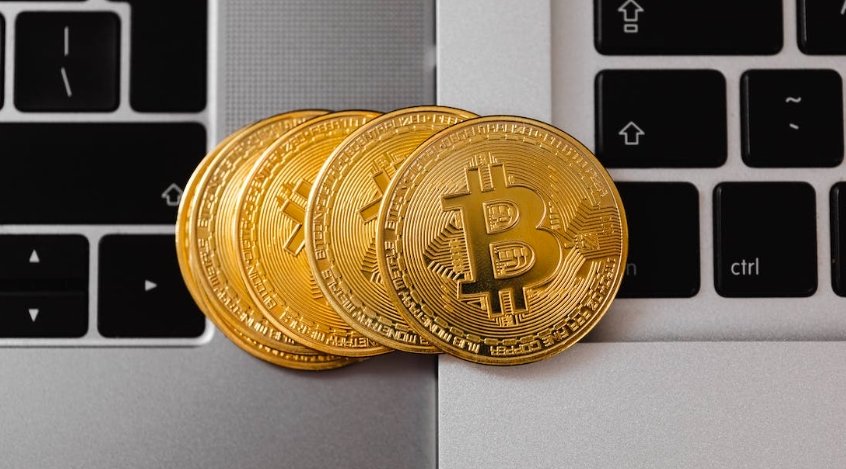Blockchain Beyond Bitcoin: Exploring Decentralized Applications (dApps) is an exploration of a revolutionary new technology that is rapidly gaining traction. Decentralized applications, or dApps, are applications that run on a distributed network of computers, rather than a single computer or server. This allows users to access the application in a peer-to-peer manner, meaning that no single entity controls or maintains the application. This is in stark contrast to traditional applications, where a single entity is responsible for the development and maintenance of the application.
The benefits of using dApps are numerous, from increased security and privacy to greater transparency and trust. Additionally, dApps are more resilient to outages, as the application can continue to function even if one or more nodes in the network go offline. Additionally, due to the distributed nature of the network, dApps can be more cost-effective to operate, as there is no need for costly server infrastructure or maintenance. However, there are some challenges associated with dApps, such as scalability and the need for more robust security measures.
Overall, dApps offer an exciting new way to develop and deploy applications, with the potential to revolutionize the way we interact with technology. This article provides an overview of the potential benefits and challenges of using dApps, as well as exploring the various types of dApps and their applications.

Types of dApps
Overview of the different types of dApps
A dApp (decentralized application) is a software program that operates on a distributed computing system. dApps have been gaining popularity in recent years due to their ability to enable users to interact with one another in a secure and trustless environment. dApps are typically built on blockchain technology and are open source, meaning anyone can view and contribute to the code. dApps are divided into different categories based on their purpose, with the most popular being financial, gaming, and social applications.
Financial dApps
Financial dApps are decentralized applications that enable users to access financial services without the need for a centralized authority. These applications allow users to make payments, trade cryptocurrencies, and access banking services. Financial dApps provide users with an alternative to traditional banking services, and are designed to be more secure and efficient. Popular financial dApps include Ethereum, MakerDAO, and Augur.
Gaming dApps
Gaming dApps are decentralized applications that enable users to play games and wager on events. These applications are designed to be more secure and efficient than traditional gaming platforms, and allow users to interact with one another in a trustless environment. Popular gaming dApps include CryptoKitties, Gods Unchained, and Axie Infinity.
Social dApps
Social dApps are decentralized applications that enable users to interact with one another in a trustless environment. These applications allow users to share content, follow one another, and access social media services. Social dApps are designed to be more secure and efficient than traditional social media platforms, and provide users with an alternative to traditional social media services. Popular social dApps include Steemit, DTube, and Minds.
Comparison of the most popular dApps
The most popular dApps are Ethereum, EOS, and TRON. Ethereum is an open-source, public blockchain-based platform that allows users to develop and deploy decentralized applications. It is the most popular dApp platform and is used by developers to create financial, gaming, and social dApps.
EOS is a blockchain-based platform that enables developers to create and deploy decentralized applications. It is designed to be more secure and efficient than Ethereum, and is used by developers to create financial, gaming, and social dApps.
TRON is a blockchain-based platform that allows developers to create and deploy decentralized applications. It is designed to be more secure and efficient than Ethereum and EOS, and is used by developers to create financial, gaming, and social dApps.
Each of these platforms has unique features and advantages that make them appealing to developers. Ethereum is the most popular platform, and is used by developers to create a variety of dApps. EOS is more secure and efficient than Ethereum, and is used by developers to create financial, gaming, and social dApps. TRON is the most secure and efficient platform, and is used by developers to create financial, gaming, and social dApps.
Use cases for dApps
Explanation of How dApps Can Be Used for Peer-to-Peer Transactions, Decentralized Storage, Identity Management, and More dApps, or decentralized applications, are applications that run on a distributed network of computers, rather than a single server. This makes them more secure and reliable than traditional applications, as they cannot be shut down or manipulated by a single entity. dApps can be used for a wide range of applications, including peer-to-peer transactions, decentralized storage, identity management, and more.
Peer-to-peer transactions are transactions between two users, without the need for a third-party intermediary. This could be used for sending money, or exchanging digital assets such as cryptocurrencies. dApps can provide a secure platform for these transactions, as they are not subject to the same regulations and restrictions that traditional intermediaries are.
Decentralized storage is the use of distributed networks of computers to store data, instead of using a single server. This allows for more secure and reliable storage, as the data is not stored in a single location and is therefore less susceptible to hacks and data breaches. dApps can be used to facilitate the storage and retrieval of data, as well as to ensure security and privacy.
Identity management is the process of verifying the identity of users and granting them access to certain services or resources. dApps can be used to securely store and manage user data, as well as to verify user identities. This can be used to protect users from identity theft and ensure the security of online services.
Examples of Real-World Use Cases for dApps
dApps can be used in a wide range of industries, including finance, healthcare, government, and more. Here are some examples of how dApps can be used in the real world:
• Banking: Banks can use dApps to securely store user data and facilitate peer-to-peer payments.
• Healthcare: Hospitals and clinics can use dApps to store patient data securely and facilitate telemedicine services.
• Government: Governments can use dApps to securely store and share data, as well as to facilitate the delivery of services to citizens.
• Retail: Retailers can use dApps to securely store customer data and facilitate e-commerce transactions.
• Education: Universities and schools can use dApps to securely store student data and facilitate online learning.
• Insurance: Insurance companies can use dApps to securely store customer data and facilitate claims processing.
Discussion of How dApps Can Be Integrated into Existing Systems and Industries
dApps can be integrated into existing systems and industries in a variety of ways. For example, they can be used to securely store and manage data, facilitate peer-to-peer transactions, and provide a secure platform for identity management. They can also be used to improve the efficiency and reliability of existing systems, as well as to reduce costs and increase security. Additionally, they can be used to facilitate the development of new services, products, and applications.
Integrating dApps into existing systems and industries can be a complex process, as they need to be securely integrated with existing systems and processes. Additionally, they need to be designed and implemented in such a way that they do not disrupt existing systems or introduce any security risks. It is important that dApps are properly tested and validated before they are deployed, to ensure that they are secure, reliable, and fit for purpose. Finally, it is important to ensure that users are aware of the security and privacy implications of using dApps.
Development of dApps
Overview of the Development Process for dApps
Decentralized applications, commonly known as dApps, are digital applications that run on a distributed network and are not controlled by a single entity. The development of dApps can be divided into three distinct stages: planning, development, and deployment. In the planning stage, developers must consider the type of dApp they want to create, the technology and tools they need to build it, and the potential users of the dApp. In the development stage, developers must write code, create a distributed ledger, and test the dApp. Finally, in the deployment stage, developers must deploy the dApp to a distributed network and ensure that it is functioning correctly.
Explanation of the Programming Languages, Frameworks, and Tools Used to Create dApps
Developers use a variety of programming languages, frameworks, and tools to create dApps. Popular programming languages used to build dApps include JavaScript, Python, Solidity, and Go. Common frameworks used to create dApps include Ethereum, Hyperledger Fabric, and Corda. Additionally, developers must use tools such as web3.js, Truffle, and MetaMask to connect their dApps to the blockchain and enable users to interact with them.
Discussion of the Challenges and Best Practices for Developing Secure and Scalable dApps
Developing dApps presents several challenges, such as ensuring the security and scalability of the dApp. Security is a critical concern for dApps, as they are run on a distributed network and are not controlled by a single entity. To ensure the security of a dApp, developers must use secure coding practices, use code auditing tools to identify potential security vulnerabilities, and ensure that the dApp is running on a secure distributed network. Additionally, dApps must be designed to be scalable, meaning they must be able to handle an increasing number of users and transactions. To ensure scalability, developers must use efficient databases and optimize the code to reduce latency.
Best Practices for Developing Secure and Scalable dApps
Benefits:
• Use secure coding practices
• Use code auditing tools to identify potential security vulnerabilities
• Ensure that the dApp is running on a secure distributed network
• Use efficient databases
• Optimize the code to reduce latency
Tips:
• Consider the type of dApp you want to create
• Choose the right programming language and framework
• Test the dApp before deploying it
• Monitor the dApp performance regularly
• Be aware of the latest security threats and vulnerabilities
Risks and challenges of dApps
The development of dApps (decentralized applications) has been a game-changer for the way we can interact with the internet and its underlying technology. However, with any new technology, there are risks and challenges associated with dApps that need to be addressed. This includes security vulnerabilities, scalability issues, and regulatory uncertainty.
Security Vulnerabilities
Security is the top priority of any application, but decentralized applications pose an even greater risk. Because dApps are run on a distributed network, they are vulnerable to hacking attempts, malware attacks, and other malicious activities. Additionally, dApps require users to control their own private keys, which can be stolen or lost if not properly safeguarded.
Scalability Issues
Another challenge with dApps is scalability. As the number of users and transactions grows, the underlying technology must be able to keep up with demand. This means that dApps must be designed with scalability in mind from the start in order to ensure that they can handle a large number of users and transactions.
Regulatory Uncertainty
Finally, there is regulatory uncertainty surrounding dApps. Many countries are still in the process of deciding how to regulate decentralized applications, and this can create an uncertain environment for developers and users alike. It is important for developers to stay up to date on the latest regulations and be prepared to comply with any changes that may come.
Making dApps More Resilient and Secure
Despite the risks and challenges associated with dApps, there are a number of steps that can be taken to make them more resilient and secure. For example, developers can use smart contracts to create secure and immutable code that ensures transactions are processed correctly. Additionally, developers should use security best practices such as encrypting private keys and using secure coding techniques. Finally, developers should stay up to date on the latest regulations and ensure that their dApps are compliant.
By taking the necessary steps to make dApps more secure and resilient, developers can ensure that their applications are safe and reliable. Additionally, this will help to create a more stable and secure environment for users to interact with dApps.

The future of dApps
Overview of the current state of the dApp market and its growth potential
The current state of the dApp market is characterized by rapid growth, with a noteworthy increase in the number of users and applications. This growth is expected to continue in the future, as more users become aware of the potential of dApps and the advantages they offer. According to a recent survey, around 75% of developers and entrepreneurs in the blockchain space are actively working on dApps. This is indicative of a surge in interest in this technology and its potential to revolutionize traditional industries.
The dApp market has been greatly aided by the development of new decentralized platforms such as Ethereum and EOS. These platforms provide the necessary infrastructure and tools for developers to create dApps. Additionally, Ethereum’s smart contracts have enabled the creation of a wide range of dApps, from financial services to web applications. As more developers become aware of these platforms, the dApp market is likely to experience further growth.
Discussion of how dApps could transform industries and create new opportunities
dApps have the potential to revolutionize traditional industries by introducing innovative solutions and processes. For example, in the financial services industry, dApps can enable the creation of new types of investments, such as decentralized exchanges, peer-to-peer lending, and crowdfunding. These types of services can provide greater access to capital for businesses and individuals, allowing them to take advantage of new opportunities. Additionally, dApps can also be used to create new types of digital assets, such as tokenized securities, which can be traded on blockchain-based exchanges.
In the healthcare industry, dApps can provide secure, decentralized access to patient records, allowing for greater efficiency and accuracy in the management of patient care. Furthermore, dApps can also be used to facilitate the secure exchange of healthcare data between patients, doctors, and insurers. This could lead to cost savings and better outcomes for patients.
In the media industry, dApps can be used to create new types of content and monetization models. For example, dApps can be used to create peer-to-peer streaming services, allowing users to share and monetize their content. Additionally, dApps can also be used to create new types of virtual reality experiences, allowing users to explore new worlds and experiences.
Analysis of potential future developments and trends in the dApp market
The future of the dApp market is likely to be shaped by a number of factors, including the development of new platforms and tools, the adoption of new technologies such as artificial intelligence and machine learning, and the emergence of new business models.
One potential development is the emergence of new platforms and tools that make it easier for developers to create dApps. For example, platforms such as Ethereum and EOS are already making it easier for developers to create decentralized applications. In the future, new platforms and tools may emerge that make it even simpler and faster to create dApps.
Another potential development is the increasing adoption of new technologies, such as artificial intelligence and machine learning. These technologies can be used to create new types of dApps, such as automated trading bots or AI-powered chatbots. Additionally, as more developers become aware of the potential of these technologies, they are likely to create more sophisticated dApps that can tackle complex tasks.
Finally, the emergence of new business models could also shape the future of the dApp market. For example, new models such as the tokenization of assets or the use of blockchain-based micropayments could enable new types of businesses and services. Additionally, new models such as decentralized autonomous organizations (DAOs) could enable the creation of new types of organizations that are not bound by traditional corporate structures.
Conclusion
The possibilities for blockchain technology, and for decentralized applications (dApps) in particular, are truly exciting. This technology has the potential to revolutionize the way we do business, from finance to healthcare to government services. As we explore the possibilities of this technology, it is important to remember that the same principles that have made Bitcoin successful – decentralization, transparency, and security – will be the same principles that will make dApps successful as well. By combining the right elements with the right technology, we can build powerful applications that can benefit everyone. As the technology continues to evolve, so too will the applications it enables. We are only at the beginning of this journey and there is a great deal of potential still to be unlocked. The future of blockchain technology, and the future of decentralized applications, is indeed a bright one.
FAQs
1. What is Blockchain Beyond Bitcoin?
Blockchain Beyond Bitcoin is a term used to describe the various decentralized applications (dApps) that exist on the blockchain technology beyond just Bitcoin. These dApps use public and private networks to facilitate secure and transparent transactions, contracts, and records.
2. What are the Benefits of Blockchain Beyond Bitcoin?
The benefits of blockchain beyond Bitcoin include increased security, trustless transactions, improved transparency, and cost savings. Additionally, these dApps have the potential to revolutionize the way we do business and bring a new level of trust between stakeholders.
3. What are Decentralized Applications (dApps)?
Decentralized applications (dApps) are applications built on the blockchain that are distributed, autonomous, and secure. They are designed to be decentralized, meaning they are not owned by any single entity and instead, run on a peer-to-peer network.
4. What Types of dApps Exist?
There are various types of dApps, such as financial services, prediction markets, online gaming, social networks, messaging apps, and more.
5. How do dApps Work?
dApps are built on the blockchain and use smart contracts to facilitate secure, trustless transactions. These contracts are self-executing and are used to automate processes, while ensuring that all stakeholders in a transaction are protected.
6. What is a Smart Contract?
A smart contract is a computer protocol which is used to facilitate, verify, or enforce the performance of a contract. Smart contracts are self-executing and are used to automate processes, while ensuring that all stakeholders in a transaction are protected.
7. What is a Distributed Ledger?
A distributed ledger is a database that is shared and maintained by a network of computers. It is a digital platform for recording, managing, and verifying transactions. Distributed ledgers are used to create and record digital transactions on the blockchain, making them secure and immutable.
8. What is a Decentralized Exchange (DEX)?
A decentralized exchange (DEX) is a platform that allows users to buy and sell cryptocurrencies without the need for a central authority. DEXs use smart contracts to facilitate trustless transactions, ensuring that the transactions are secure and the funds are not at risk of being stolen.
9. How Can Decentralized Applications Help Businesses?
Decentralized applications can help businesses in numerous ways. These applications can be used to facilitate secure, trustless transactions, automate processes, and help reduce costs. Additionally, these applications can help improve transparency and trust between stakeholders.
10. What is the Future of Decentralized Applications?
The future of decentralized applications is bright, with more and more dApps being developed every day. These applications have the potential to revolutionize the way we do business, with increased security, improved transparency, and cost savings.


















